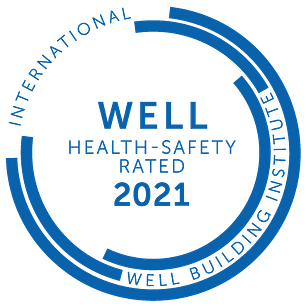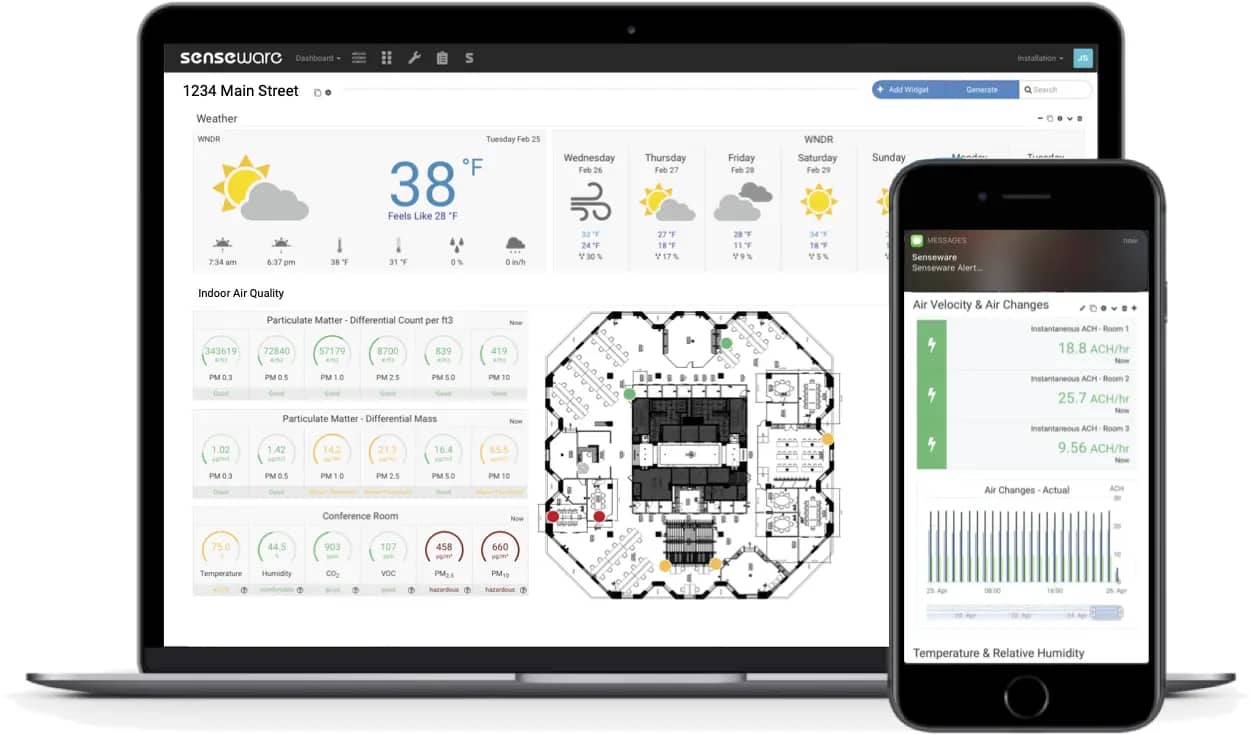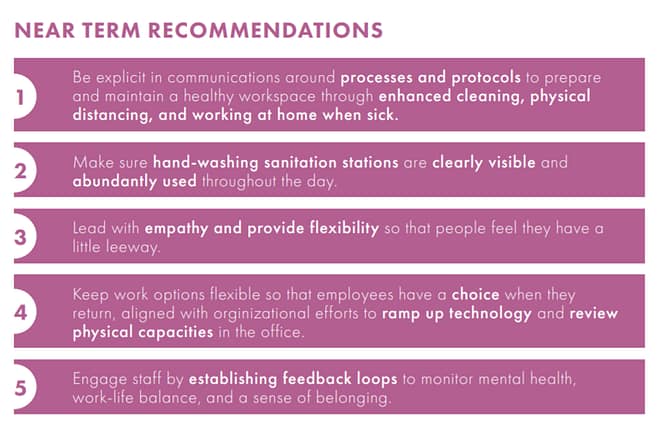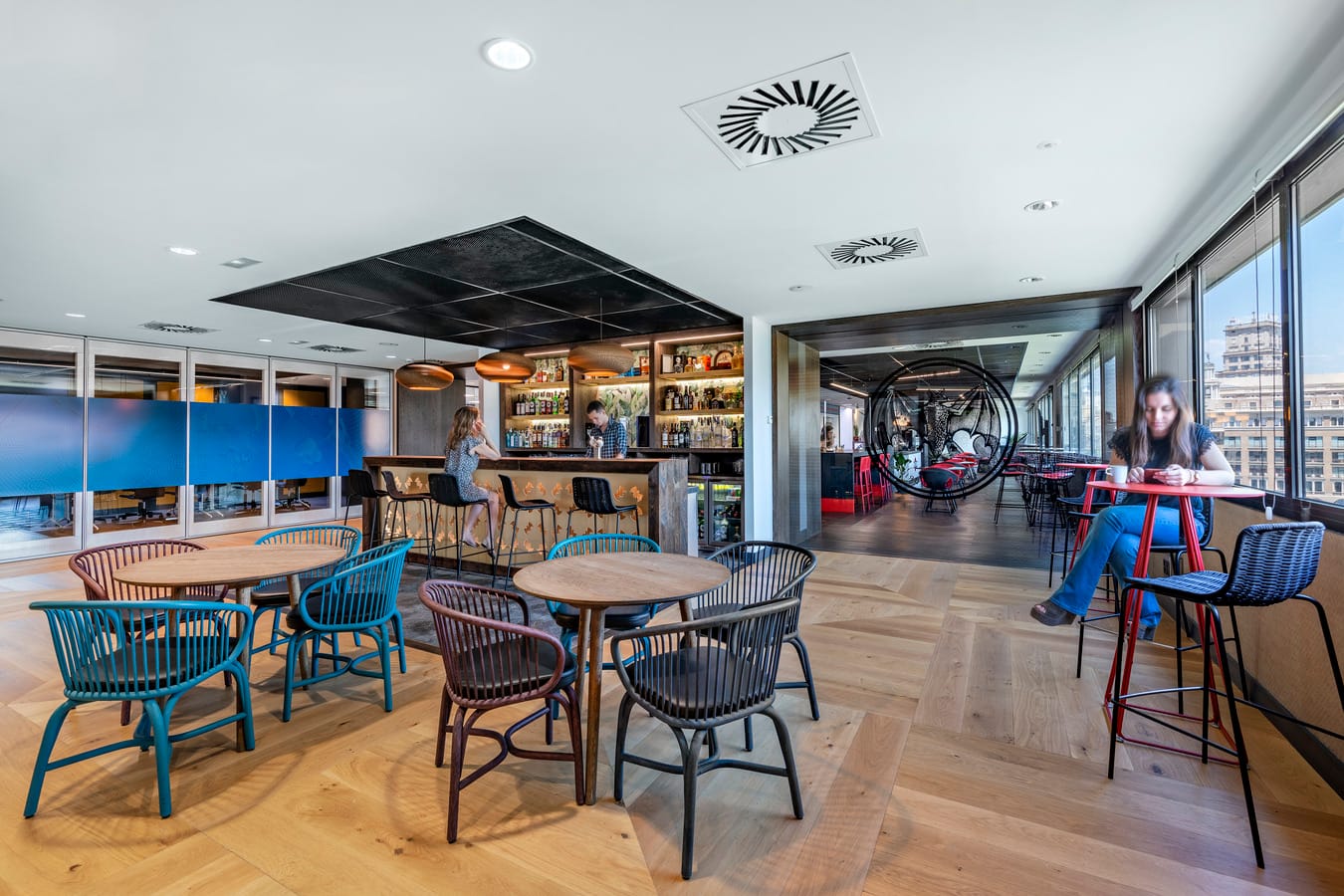By Amy Groome, WELL AP | Designer
All creatures seek cues in the environment for signs of danger. Now more than ever, humans are on high alert for threats to health with the all-encompassing fear of Covid-19 and prolonged shelter-at-home orders. Dirty glass doors have become warning signs of a lack of cleanliness. A high-pile carpet can signify a breeding ground for trapped dust and unwanted particles. Ignorance is no longer bliss, and people are going to expect more real-time proof of health and safety in their environments. The shared spaces of the future are going to be scrutinized and studied under a sharper lens, and it is up to design and maintenance teams to employ new strategies to instill confidence and reassure users that the space they are occupying is indeed a safe haven.
A Nutrition Label for Our Buildings
The Intentional WELL Building Institute (IWBI), the organization that developed the WELL Building Standard™ (WELL™) to focus on human health in the built environment, has recently rolled out a WELL Health-Safety Rating that responds directly to the novel coronavirus. The standard details 21 features that respond to the spread of respiratory disease, with titles including Cleaning and Sanitizing Procedures, Emergency Preparedness Programs, Health Service Resources, Air and Water Quality Management, and Stakeholder Engagement and Communication. Perhaps one of the most compelling aspects of this certification is the WELL Health-Safety seal that buildings can display once third-party verified. Just as shoppers in the grocery store may seek out products with “Non-GMO Verified” or “USDA Organic” stickers, people will feel drawn to buildings with similar commitments to safeguarding human health.

An Interior Fitness Tracker
We live in a world of endless data and instantaneous feedback. During the devastating fires that wreaked havoc on the West Coast last summer, I relied on the AirVisual app by IQAir to inform me when it was deemed safe to venture outside. Similar to the air quality tracking of outdoor environments, companies such as Senseware Technologies are providing IoT platforms that monitor the health of indoor environments. This real-time, actionable data both helps experts respond immediately to red flags and also gives occupants peace of mind. Their Particulate Matter Tracker speaks specifically to room filtration systems’ efficacy and can detect virus particles in the air. The technology serves to alert occupants of potential concerns.


Show, Don’t Just Tell
A 2020 study released by IA, in collaboration with Space Matrix reinforces the idea that changes must be made visible to be impactful. It isn’t enough that deep cleaning is becoming a priority in a post-pandemic world—this effort must be made explicitly visible to occupants to reassure and instill confidence. Designers at IA have explored how making cleaning and maintenance services visible or even celebrated at a “Wellness Bar” can instill peace of mind in occupants, which was noted along with other recommendations in IA’s Braver New World study.

The Workplace at Our Fingertips
A 2019 study from Adobe found that younger generations have elevated expectations for digital experiences across retail, travel, hospitality, media and entertainment, and financial services.
“Half of people under 35 would rather engage with a computer than a human when interacting with a brand.”- Taylor Schreiner, Director, Adobe Digital Insights
They found that “as the lines blur between retail, hospitality, and workplace experiences…these same sentiments are also being expected of our places of employment.” Emerging smartphone apps (e.g., HARBOR@work) bring workplace resources such as desk reservations, internal updates, access to HR resources, and more to employees’ fingertips. In a hybrid work from home and office model, instantaneous access to workplace updates and metrics will be essential. In a world where we can reserve restaurant tables, order coffee, receive immediate traffic updates, and order items on Amazon with 2-day shipping all from our phones, it is a natural next step to curate a similar experience for our workplace. Likewise, virtual walkthroughs allow end-users to be introduced to their new safe workspace from home before physically entering. Just as realtors have become accustomed to using virtual home walkthroughs during the pandemic, a visual tour will provide assurance to users.


